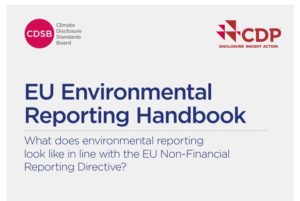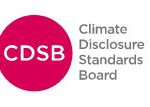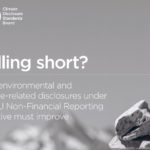
With the EU Green Deal aiming to increase environmental and climate disclosure, the Climate Disclosure Standards Board (CDSB) and CDP have released an environmental reporting handbook to help companies improve their disclosure in line with the Non-Financial Reporting Directive (the Directive).
The Directive requires around 6,000 companies across Europe to disclose in their management report information on policies, risks and outcomes regarding environmental and social matters. However, environmental reporting to date has not been sufficient both in quality and quantity. In particular, investors have cited challenges around the comparability and reliability of information and difficulties finding non-financial information even when it is reported.
Launched recently, the EU Environmental Reporting Handbook helps companies learn from their peers to better understand how to report in line with the Directive. Examples from companies across EU member states including Anheuser-Busch InBev, Royal DSM and Société Générale illustrate how these companies are effectively disclosing information corresponding to the Directive’s five content categories on environmental matters.
To further facilitate disclosure, the Handbook helpfully maps each category to the corresponding requirements of the CDSB Framework, the TCFD recommendations, and the relevant questions of the CDP climate change questionnaire.
The release of the EU Environmental Reporting Handbook comes at a time when non-financial reporting is increasingly gaining prominence worldwide.
For the first time ever, the top five risks in the WEF Global Risks Report 2020 were environmental. Meanwhile, results from CDP show that companies on the climate change A List have outperformed their peers on the stock market by 5.5% per annum according to STOXX, indicating a link between transparency and financial success.
The European Commission also announced that it will review the Directive in 2020 to improve disclosure by companies on climate and environmental information. As reporting requirements tighten, guidance such as the EU Environmental Reporting Handbook is crucial to support companies in improving their disclosures.
“To achieve the estimated €260 billion of additional annual investment needed to meet the current 2030 climate and energy targets, a massive mobilisation of not just public but also private sector capital is required. Clear, consistent and comparable disclosure will play a key role in this allocation of capital to ensure that investors are fully informed about the sustainability of their investment practices,” said Mardi McBrien, Managing Director, CDSB. “The Handbook offers companies guidance on how to effectively approach disclosure including what can be learned from the experience of their peers. We have identified their efforts as good practice; however, we are still far from best practice. We look forward to working with the European Commission to strengthen the existing Directive with the objective of bringing environmental disclosure into the heart of financial decision-making.”
Mirjam Wolfrum, Director, Policy Engagement, CDP Europe: “The EU has confirmed that they will review the Directive in 2020 as part of the EU Green Deal. This Handbook offers companies an opportunity to get ahead of the curve and improve their reporting practices in advance of any update to the Directive and more stringent non-financial reporting practices. Companies that already report information on environmental and climate change through CDP and the CDSB Framework are already one step ahead.”
The EU Environmental Reporting Handbook is supported by the LIFE Programme of the European Union.
The EU Environmental Reporting Handbook can be downloaded here: www.cdsb.net/nfrhandbook2020



